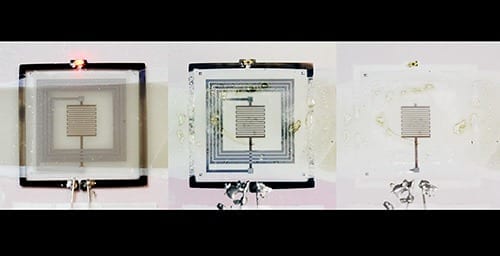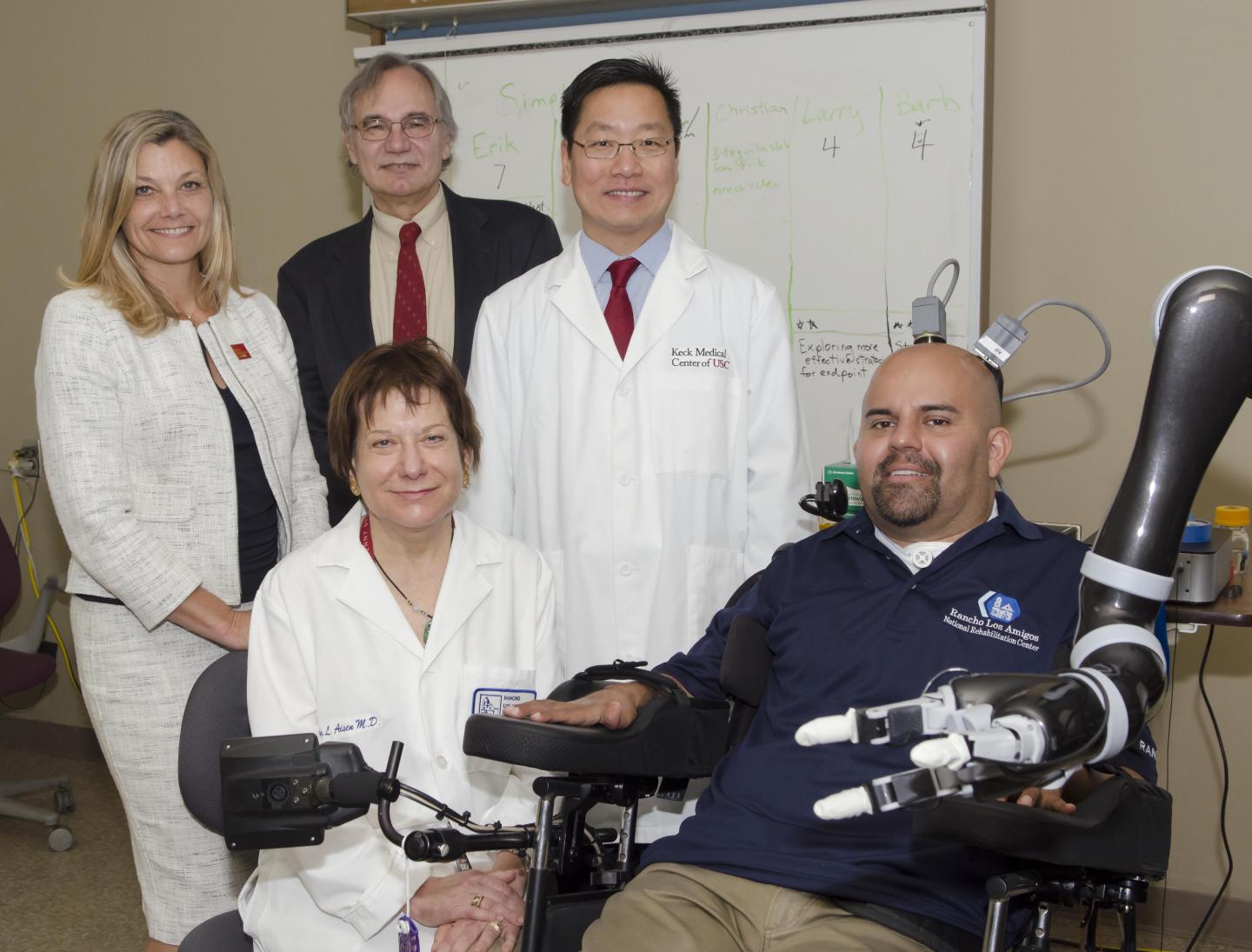
Where do electronics go when they die? Most devices are laid to eternal rest in landfills. But what if they just dissolved away, or broke down to their molecular components so that the material could be recycled?
University of Illinois researchers have developed heat-triggered self-destructing electronic devices, a step toward greatly reducing electronic waste and boosting sustainability in device manufacturing. They also developed a radio-controlled trigger that could remotely activate self-destruction on demand.
The researchers, led by aerospace engineering professor Scott R. White, published their work in the journal Advanced Materials.
“We have demonstrated electronics that are there when you need them and gone when you don’t need them anymore,” White said. “This is a way of creating sustainability in the materials that are used in modern-day electronics. This was our first attempt to use an environmental stimulus to trigger destruction.”
White’s group teamed up with John A. Rogers, a Swanlund chair in materials science and engineering and director of the Frederick Seitz Materials Laboratory at Illinois. Rogers’ group pioneered transient devices that dissolve in water, with applications for biomedical implants. Together, the two multi-disciplinary research groups have tackled the problem of using other triggers to break down devices, including ultraviolet light, heat and mechanical stress. The goal is to find ways to disintegrate the devices so that manufacturers can recycle costly materials from used or obsolete devices or so that the devices could break down in a landfill.
The heat-triggered devices use magnesium circuits printed on very thin, flexible materials. The researchers trap microscopic droplets of a weak acid in wax, and coat the devices with the wax. When the devices are heated, the wax melts, releasing the acid. The acid dissolves the device quickly and completely.
To remotely trigger the reaction, researchers embedded a radio-frequency receiver and an inductive heating coil in the device. The user can send a signal to cause the coil to heat up, which melts the wax and dissolves the device.
Read more: Mission possible: This device will self-destruct when heated
The Latest on: Self-destructing electronic devices
[google_news title=”” keyword=”Self-destructing electronic devices” num_posts=”10″ blurb_length=”0″ show_thumb=”left”]
via Google News
The Latest on: Self-destructing electronic devices
- Plastic-eating bacteria can help waste self-destructon April 30, 2024 at 3:08 pm
By incorporating spores of plastic-eating bacteria they've developed a plastic that can self-destruct. The spores remain dormant during the useful lifetime of the plastic, but spring back to life ...
- Plastic-eating bacteria can help waste self-destructon April 30, 2024 at 11:42 am
However, researchers have come up with a sci-fi like solution. By incorporating spores of plastic-eating bacteria they've developed a plastic that can self-destruct. The spores remain dormant during ...
- Plastic-eating bacteria can help waste self-destructon April 30, 2024 at 11:42 am
Scientists have developed a "self-digesting plastic", which, they say, could help reduce pollution. Polyurethane is used in everything from phone cases to trainers, but is tricky to recycle and ...
- Plastic-eating bacteria help waste self-destructon April 30, 2024 at 8:42 am
However, researchers have come up with a sci-fi like solution. By incorporating spores of plastic-eating bacteria they've developed a plastic that can self-destruct. The spores remain dormant during ...
- Plastic-eating bacteria help waste self-destructon April 29, 2024 at 5:00 pm
The spores remain dormant during the useful lifetime of the plastic, but spring back to life and start to digest the product when exposed to nutrients in compost. There's hope "we can mitigate ...
- Keeper Security Introduces Time-Limited Access and Self-Destructing Records for Hyper-Secure Credential Sharingon April 8, 2024 at 5:00 pm
Time-Limited Access and Self-Destructing Records ensure that users ... and zero-knowledge security to protect every user on every device. Our next-generation privileged access management solution ...
- self destructon November 24, 2023 at 4:00 pm
That’s why we like the “rapid power cycling” method of triggering the drive’s self-destruct sequence; it could easily be disguised as shaking hands in a stressful situation. Who knew that ...
- Self-Destructon May 11, 2023 at 6:50 pm
Through one-on-one interviews with the athletes themselves, Self-Destruct sets itself apart from the competition by being the only show to truly examine the cerebral side of the contest ...
via Bing News










